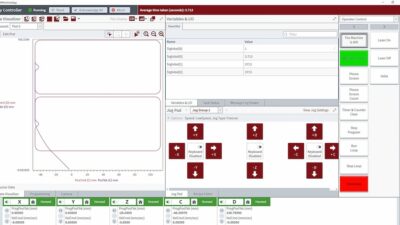The conference—the third such event to be organized in recent years—marked “a valuable opportunity to share experiences and opinions about trends in manufacturing with other European manufacturing executives."
The European Manufacturing Strategies Summit 2007, held in Düsseldorf October 3-5, had something for everyone—including a private tour of BMW’s new state-of-the-art production plant in Leipzig, Germany; pre-event master classes conducted by leading experts; and a series of compelling case studies drawing together some of the most recent advances in European manufacturing.
From Airbus and Akzo Nobel to Siemens and Schindler, it was difficult to think of a major manufacturer not in attendance.
The conference—the third such event to be organized in recent years—marked “a valuable opportunity to share experiences and opinions about trends in manufacturing with other European manufacturing executives,” notes Daniele Di Bona, group plant director of Italian material-handling equipment manufacturer Bolzoni.
Take privately held McLean, Va.-based Mars , whose several thousand European employees—termed associates—contribute a massive 42 percent of the $20-billion pet food-to-confectionery conglomerate’s global sales revenues. For Mars, the conference was an opportunity to showcase its recent progress in lean manufacturing. It was an opportunity evidently welcomed by a conference room packed with delegates—many of whom doubtless shared Mars’ own challenges in bringing lean approaches to continental European workplaces and supply chains so far reluctant to take the plunge.
Mars’ journey to lean was not without a certain irony, observed Alexander Appel, the company’s European head of lean deployment. The company’s 50-year-old guiding principles—quality, responsibility, mutuality, efficiency, and freedom—dovetail well with lean’s own guiding principles—yet despite this, says Appel, Mars’ European operations generally tended to stick with traditional approaches, even when lean-type tools such as Six Sigma, SMED, and value stream mapping had successfully been deployed in specific instances to address specific production requirements.
| Günter Rester, European director of marketing for manufacturing industry at Microsoft |
“The tools delivered results, but didn’t get us where we wanted to be,” Appel recalls. The problem: The business model in which the tools were embedded remained traditionally focused, locking Mars into push-based production, for example, rather than pull-based production. The eventual key to breaking that mould—a top-down deliberate adoption of a Toyota-inspired business model—saw the reliance on push-based production eased, opening the door to initiatives to instill lean principles right across the European organization.
The new business model, says Appel, “served as a descriptor of what we should be doing on our lean journey”—not because some textbook somewhere called for it, he stresses, but because the link between the lean action and the business strategy was now clear and explicit. And the direction it pointed to, he says, called for Mars to concentrate its lean actions in three key areas: strategy deployment, the production system, and 5-S workplace optimization techniques.
Each played an important part. 5-S, for example, brought about greater use of consistent ways of working, and the development of standard operating procedures. Far from restricting individual initiative, observes Appel, “We believe standardization is liberating for our associates.”
Strategy deployment—or‘policy function deployment’ as it’s sometimes known—keeps everyone within Mars Europe, from the factory floor upwards, focused on one simple vision: ‘What can I do tomorrow that’s better than what I’ve done today?’
The production system, for its part,‘operationalizes’ these approaches within a pull-based framework, freeing up both associates and their managers to spend more time on training and development, and spend less time on firefighting.
“We’d like our line mangers to spend 80 percent of their time on coaching and developing our associates—and at the moment, it’s more like 20 percent,” says Appel.
In conclusion, he adds, Mars’ experiences with its lean transformation led to the conclusion that for lean to be successful, businesses had to view it as an integrated process of continuous improvement, driven by a solid business strategy.
“Lean isn’t just a set of tools,” stresses Appel. “Everything we’ve tried has worked—but it has taken time, has required some investment, and has called for passion and commitment from our associates. But it’s worked—and the mind-set within the business has changed.”
Away from the conference rooms devoted to operational presentations, one of the most popular sessions seemed to be Microsoft’s briefing on its evolving framework for collaborative manufacturing, especially when viewed from an innovation standpoint. Here, the hot news wasn’t so much the growing importance of Microsoft Dynamics solutions to European manufacturers—although a 13-percent compound annual growth rate isn’t to be sniffed at—but the increasing use of Microsoft’s core technologies by partners and end users.
“It’s not just about Windows,” notes Günter Rester, European director of marketing for manufacturing industry at Microsoft. “It’s about Office, which is the user interface most users understand; and SharePoint for collaboration; and SQLServer for collaboration.”
Microsoft, Rester notes, saw SharePoint license sales exceed 90 million in a single 12-month period, making it, in Rester’s words, “the world’s most widely used portal.”
A forthcoming release of Siemens UGS PLM Software ’s TeamCenter product, notes Rester, will be built around SharePoint Server—just as vendors as diverse as Wonderware and OSIsoft’s own products will incorporate both SharePoint Server and other Microsoft tools such as the server-based Excel Services product to analyze and visualize data shared—over the Web if required.
Seeing is believing, though—including a powerful Vista -driven example of that visualization capability, which was made clear to the assembled audience: 64-bit graphics, high-end analytics, and ease of use make for a very powerful combination indeed.



